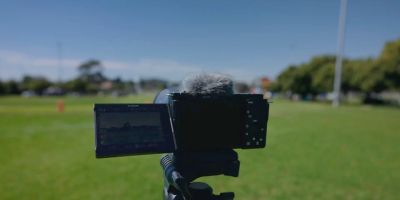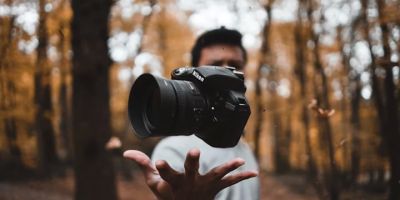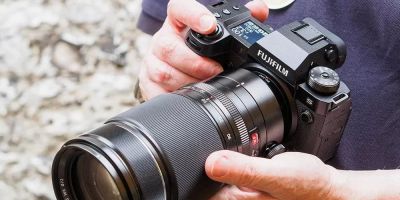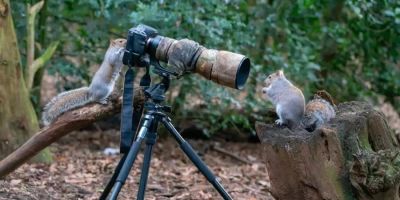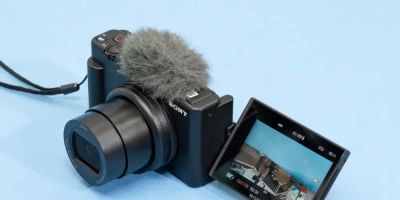How to Clean Your Camera Sensor Properly
As a photographer, one of the most important yet often overlooked aspects of camera maintenance is cleaning the camera sensor. Over time, dust, dirt, and other particles can accumulate on the sensor, leading to noticeable spots or blurriness in your images. I’ve been there myself – frustrated by the specks in my photos and the blurry results. Cleaning the sensor can be a delicate process, but it’s something every photographer, whether beginner or pro, should learn how to do properly. In this article, I’ll walk you through the best practices for cleaning your camera sensor and ensuring your images remain crystal clear.
1. Understanding the Importance of Cleaning Your Camera Sensor
Before diving into the cleaning process, it’s crucial to understand why cleaning your camera sensor is so important. The camera sensor is the heart of your camera – it captures the light and color that create your image. Over time, particles from the environment can settle on the sensor and cause marks or blemishes that appear in your photos, especially when shooting with a small aperture or on light backgrounds. I remember my frustration when I started seeing strange, dark spots on my photos, no matter how much I edited them. I soon realized it was time to clean my camera sensor properly.
2. When to Clean Your Camera Sensor
Knowing when to clean your camera sensor can save you a lot of time and effort. Some of the most common signs that your sensor needs cleaning include:
- Visible spots or marks in your images: If you see faint circles or streaks, it’s likely dust or debris on the sensor.
- Dark blotches in photos: These can appear when shooting at smaller apertures (high f-stop numbers), which create a deeper depth of field, showing the spots clearly.
- Frequent outdoor photography: If you frequently shoot in dusty or windy conditions, your sensor may gather particles more quickly.
In my case, I noticed the spots started appearing more after I went on a trip to a sandy beach. The environment was dusty, and I hadn’t realized how much dust had accumulated on my sensor until I saw the marks in my images. That was my sign to clean it thoroughly.
3. The Right Tools for the Job
When cleaning your camera sensor, using the right tools is essential. While it might be tempting to use a regular cloth or cotton swab, these can actually scratch the sensor or leave behind lint. Instead, I use the following tools:
- Air blower: A small air blower is the first thing I use. It’s perfect for blowing away loose dust and debris. I always make sure to hold the camera upside down to allow the particles to fall out.
- Sensor cleaning swabs: These are specially designed swabs for cleaning camera sensors. They are often sold with a special cleaning solution and should be used gently to wipe the sensor.
- Sensor cleaning solution: If the air blower doesn’t do the job, I use a gentle sensor cleaning solution that’s specifically formulated for camera sensors. It’s essential to use one that won’t damage the sensor’s delicate surface.
- Microfiber cloth: For any final polishing, I use a microfiber cloth to wipe the edges of the sensor and any areas around it.
After using the air blower, I found the swabs and cleaning solution to be especially useful when I had a stubborn smudge. Always ensure you are using high-quality products designed specifically for camera maintenance to avoid causing damage.
4. How to Properly Clean the Sensor
Now that you have the right tools, here’s the step-by-step process I follow to clean my camera sensor:
- Turn off your camera: Safety first! I always turn off my camera before I start the cleaning process to avoid any damage or accidental lens movement.
- Remove the lens: I carefully remove the lens to expose the sensor. Be sure to do this in a clean, dust-free environment.
- Use the air blower: Hold the camera upside down and use the air blower to gently blow away any loose dust or particles. Never touch the sensor with the blower’s nozzle – simply direct the air at the sensor from a short distance.
- Use a sensor cleaning swab: If dust is still visible, I use a clean swab and a few drops of cleaning solution to gently wipe the sensor. I always make sure to follow the manufacturer’s instructions for the swab’s direction of motion.
- Finish with a microfiber cloth: Once the sensor is clean, I wipe any remaining excess cleaner or debris with a microfiber cloth. This step gives my sensor a smooth, lint-free finish.
I always make sure to do each step slowly and carefully, ensuring I never touch the sensor directly with my fingers. I also avoid applying too much pressure when cleaning, as the sensor is a delicate component.
5. Preventative Measures to Avoid Frequent Sensor Cleaning
While cleaning your camera sensor is part of the process, it’s much better to prevent excessive dust and dirt buildup in the first place. Here are a few strategies that have worked for me:
- Use a lens cap: Always use a lens cap when the camera is not in use. This helps prevent dust from settling inside the lens and onto the sensor.
- Avoid changing lenses in dusty environments: I try to avoid changing lenses outdoors or in places where there is a lot of dust or wind. If I must change lenses, I make sure to do it quickly and inside a clean area.
- Invest in a camera bag: Keeping your camera inside a well-protected bag can help minimize exposure to dust. I always store my camera in a padded bag with sealed compartments to keep it safe from dirt and debris.
By following these preventative measures, I’ve found that I don’t need to clean my sensor as often, and when I do, it’s a much simpler task.
6. When to Seek Professional Help
While cleaning the sensor yourself is feasible, there are times when it’s best to leave it to the professionals. If you’ve tried cleaning your sensor and still see spots or smudges, it might be time to get a professional cleaning. A technician can thoroughly clean the sensor and make sure it’s free of debris, especially if you notice stubborn marks that you can’t get rid of on your own.
There have been times when I felt unsure whether I had cleaned the sensor properly, so I took my camera to a professional to get peace of mind. They can perform a more detailed inspection and ensure your camera is in top shape.
Cleaning your camera sensor is a task that every photographer should be familiar with. With the right tools, a bit of patience, and a gentle hand, you can keep your sensor in pristine condition and avoid those frustrating spots in your photos. Whether you’re a professional or a hobbyist, understanding how to properly clean your sensor will make a big difference in the quality of your work.

